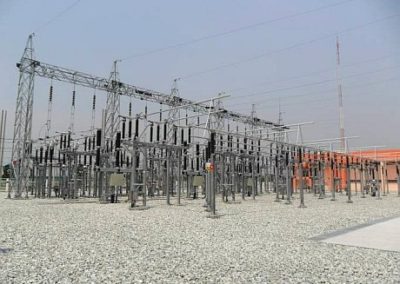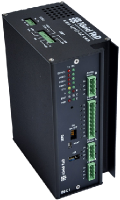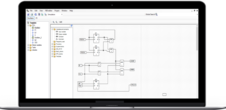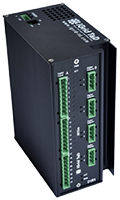Generation Dispatch Control Center
The smartest bridge between generation, grid operators and the energy marketGeneration Dispatch — All About the Balance
The large-scale distribution of electricity comes with a unique challenge: Since electricity is not being stored in grid-scale quantities, electricity supply and demand must be balanced at any given time. In other words: Generators must always feed the grid with new power at the same rate it is being lost and consumed. This challenge is becoming harder due to the intermittent nature of renewable energy sources and its uneven geographic distribution. For this reason, grid operators must increasingly invest in infrastructure and ancillary services to counteract these trends.
What is Generation Dispatch?
One of the most commonly applied methods by grid operators is Generation Dispatching, during which the generation output of certain generation facilities is adjusted according to market needs. Generation dispatch, which cannot be provided with photvoltaic or wind generation plants, can provide many benefits to grid operators, such as balancing the electric grid by following demand, providing spinning reserves for frequency control and peak matching and preventing grid congestions.
Many factors such as weather, time of the day or sometimes even a sports event influence the electricity consumption schedule of the customers, causing the grid load to fluctuate over the day, the week, and the year. In order to match supply and demand, utilities try to predict the load for different time periods and purchase this power up to a day before it will be consumed. As the consumers’ power demand constantly changes and an exact prediction is not possible, utilities can turn to the spot market and different power reserves and ancillary services to adjust the amount of electricity produced by various generation plants.
If the required load is higher than what the generators are currently producing, the frequency of the electrical grid drops below the desired 50 Hz (in the US & JP 60 Hz). The frequency must be stabilized within certain limits to protect consumers (such as tools and devices at home) that are sensitive to frequency changes. Grid operators (generation dispatchers) must then increase the power output of chosen generators, or bring an additional generating unit on line to get the frequency back to 50 Hz. The opposite case occurs when generation output exceeds consumer load. The system frequency increases above 50 cycles and grid operator must decide which power generation output needs to be dispatched. Alternatively, ancillary service providers and utilities can also import electricity or disconnect large loads when the supply falls short and vice versa in the opposite case. The priorities that determine, in which order and to what degree generators get dispatched vary between legistlations.
Dispatch Control Center Features
Further Advantages with iGrid T&D
Dispatch Control Center Features
- Dispatching Agent: Reception and integration of active and reactive power set-points by the grid operator
- Power plant control communication capabilities and algorithms
- Event management and reporting
- Plant performance analysis
- Plant monitoring and asset management functions
- Historical and real-time databases
- Generation yield value estimates based on weather forecasts and market prices
- Access control to facilities and maintenance management
- Communication of availability and forecasted production capacity
Further Advantages with iGrid
- ICCP / TASE 2 (IEC 60870–6) for communication between control centers
- All-in-one platform, operation, monitoring and real time control of both generation plant and electrical infrastructure (substation and grid-connection) in real-time.
- Advanced PPC module with powerful algorithms
- Bidding and expected generation module
- Same, customizable environment for all actors and all levels, from gateway to control center
- Internal PLC based on IEC 61131–3, easily programmable with our free iConf tool
- Highly flexible, modular and scalable solution, adaptable to any system requirements/ network topology
- Access from anywhere via web browser
- Full interoperability in any electric facility –collect data through any metering protocol protocol (incl. IEC 61850) and map it to IEC60870‑5–104 or DNP3
Generation Dispatch Control Center
What’s Behind It
Through the application of Automatic Generation Control (AGC) algorithms, which take into account generator behavior and local frequency readings, dispatchable generators can autonomously provide grid-balancing services within a few seconds, which is referred to as primary frequency response. Some grid operators and utilities demand from all power generators some degree of primary frequency response.
Secondary frequency response describes the services that are provided after a few seconds to several minutes and are usually triggered by direct commands and set-points sent from the grid operator to the generation plant. These commands must be integrated and interpreted by the AGC of each participating power plant.
For longer time periods, grid operators make use of the operational reserve, which can be devided in a spinning and non-spinning /supplemental reserve. The spinning reserve consists of generators, which are capable to temporarily increase their generation output, while the non-spinning reserve is the extra generating capacity that is not yet connected to the grid, but can be brought online after a short delay.
After about 30 minutes of under-supply, the replacement reserve kicks in to maintain the ability to react to grid inbalances in the short-term, or in other words, to restore the operational reserve.
The Technological Challenge: Interoperability
The difficulty in providing such services lies in the complexity of generation plants. Controlling the generation output of an electric facility requires communication between multi-vendor gear and equipment, which speak different protocols and operate on several communication layers. Furthermore, specially with renewable plants, there are often several actors involved who must be able to control the plant or access the plant data: the grid operator, the operation and maitenance company, the investor and sometimes aggregators or energy traders. For example, the TSO might want to access the plant for real-time electrical data through the not-so-common ICCP protocol, while the investor wants flashy historical graphs on his web browser. This often leads to generic or complex and inflexible networks, often requiring the use of interconnected or parallely functioning platforms and environments.
Thanks to the unique protocol suite and the advanced automation capabilities by iGrid’s software core iGComms, iGrid T&D can provide scalable generation plant monitoring and control solutions that are easy to set up and open for retrofits and extensions.
All-in-One Communication Systems
iControl SCADA system can act as plant gateway to connect to the grid-connecting substation devices and power plant equipment such as meters and sensors, power plant controller, SCADA/HMI for power plants or power plant control and generation dispatch control center to efficiently operate and provide ancillary services with an entire portfolio of plants. Thanks to our experience with power plant SCADAs, iControl provides high-end functionalities for the operation and maintenance (O&M) of power plants.
With our iGW and iRTU family, you can also ensure interoperability between all third party devices and your power plant controllers, gateways and RTUs.
Generation Dispatch With On-Site Data Collection
Conceptual schema

Our Dispatch Control Center Solution — Everything in One Platform
Our Dispatch Control center can operate as a SCADA and dispatching agent to a portfolio of power production plants. In current projects we have energy traders operate portfolios with a diverse variety of generation technologies, such as combined heat and power, combined cycle, nuclear, solar, wind and hydro. All plants are monitored and controled from the same platform with the same environment throughout all levels, from substation scada to control center. With just a few clicks you can find all relevant information for each facility, such as IED status, metering data, inverter performance, electrical data and events. The control center also provides event mangement to act on failures in real time.
The dispatch control center can directly communicate with the main grid operator via ICCP/TASE2. In our biggest project in Spain, the control center directly communicates with the control centers from the national grid operator (REE) and the Control Center for Renewable Energies (CECRE) to receive direct dispatch commands for the generation plants that are connected to the system. In order to maintain a fluent and efficient communication between the energy production system and the regulatory system, the dispatching center can also provide redundant infrastructure with hot-standby servers with SQL data storage and multiple operator workstations.
Dispatching & Frequency Response Services with Embedded AGC
The plants provide primary and secondary frequency reserve response by making use of automatic generation control algorithms developed by the University of Comillas, also integrating internally developed logics, which are adjusted according to the needs of the specific generation plant.
The system features a special module to comfortably provide the TSO with expected/programmed generation
outputs and frequency reserve power ranges (24–48h in advance) while meeting all respective requirements. In this way you can provide bids and connect to the energy market in the easiest way, from the same platform you can operate the plant and access KPIs, graphs and substation data.
Further, the control center also continously check the generation output and exchanges power regulation signals with the TSO, according to the requirements set by REE. The TSO can track electrical data from and send direct dispatching commands to the plants in real-time (via ICCP/Tase.2). These commands are processed by the AGC and converted by the SCADA and on-site devices, which transfer them vendor-independently on to the generation plants via IEC 60870–104, Modbus TCP and other protocols in order to control the generation output of each site individually.
Thanks to our powerful communication core, we can not only enable big power plants but also aggregators to supply ancillary services with a fleet of smaller generation plants.
All generation plants included in the portfolio, can be controlled from anywhere and anytime via the iControl web server. The same channel can be used by owners/investors, who are granted an individual user which only allows to access the information of their own plant.
World-wide Compliance and Interoperability
We are aware of the importance of accurately understanding the needs of system operators and the functional specifications set up by TSOs. Thanks to our experiences with electrical networks and substations in a variety of industries all around the planet, our products have been prepared for an immmense range of high-demanding requirements and standards, guaranteeing a peaceful approval process for any project in any country. Our certifications range from EMC compatibility and communication protocol standards like IEC 61850 to cyber security measures and have been asserted by third party certification bodies like DNV GL/ KEMA.
Powerful and Reliable Hardware for Communication Networks
We want to keep the operation of your power network as simple as possible without renouncing advanced functionalities. For this reason, based on our in-field experience, we designed powerful and flexible hardware for the energy industry. Our user-friendly hardware facilitates smooth implementations and can be easily adjusted to your needs with our free & simple iConf tool.
We are aware of the broad diversity of components a system constructor is confronted with. With our solutions you no longer need to worry about system topology, communication media, compatibility or network inefficiencies.
We encourage to set up open and scalable communication network architectures, which will allow you to comfortably react to any kind of changes in your plant’s network and replace third party devices at any given time.
Although our devices are already configurable and versatile by design, we also provide further product configurations and tailored services upon request.
Time Management
All of our systems are capable of high precision time-synchronization (<1ms) via PTP or NTP and carry internal Real-Time Clocks with a an accuracy of 1ppm. This allows to keep on recording events with a micro-second time stamping accuracy, even when connection to the time source (masterclock) is lost, permitting to trace failures back meticulously.
iConf Tool
iConf has been specifically developed for electrical applications, saving you lots of time and money throughout the control system set-up and maintenance tasks, whilst also minimizing your project risks. You can use the software tool to configure all igrid devices and software systems as well as design IEC 61850 projects, to up and download your configurations, and create your own templates.

Hot-Standby Redundancy
All of our devices can operate in hot-standby redundancy mode:
- Hot-standby server/device is updated continuously
- Clients and IEDs automatically switch to the hot-standby server
- Serial loop redundancy (hot standby gateway acts as a (virtual) serial port to arrive to disconnected devices)
Why to Opt for a Generation Dispatch Control Center by iGrid T&D?
Our generation dispatch control center solution combines state-of-the-art substation automation and SCADA technology with all functionalities the grid operator requires and all involved actors need.
Thanks to our focus on advanced communication networks in energy applications and our experience with generation facilities, we can provide a uniquely flexible and scalable all-in-one solution that is easy to use and saves a lot of costs throughout the entire project.
Solution Benefits & Functions
A‑Level certified IEC 61850 compliance
Tailored solutions according to your needs
State-of-the-art IEC 61850 technology
Customized training & support
Remote maintenance/ testing
Reliable and efficient protection functions
Improved reliability & security
Automatic (busbar) line coloring
Simple connection between IED and substation HMI
PRP network redundancy
Simple device set-up/ deployment
Graphical visualization of measurements & data
Remote substation monitoring and control
Fault diagnostics
Simple retrofits
Full interoperability
Optimized efficiency and productivity
High-speed, intelligent interlocking with GOOSE
Local & global alarm generation
Minimize outages
Role-based access control
Complex logic schemes
High-precision timestamping and event recording
Fault location detection
Automatic switching sequences
No need for auxiliary relays and hardwired interfaces
PLC automation with IEC 611313
Engineering & maintenance cost reduction
iControl or 3rd party SCADA
Customized solution
Automatic interlocking supervision
Intelligent zoom on one-line diagram
Automatic data storage
Supervisory control
Reduced space for human error
Comissioning cost reduction
Reduced wiring
Main Features
- Power Plant Control
- Generation Plant SCADA
- TSO & market communication
- Plant portfolio management
Sleep Peacefully with Expert Cyber Security
iGrid T&D enforces several layers of security measures guided by the propositions of the IEC 62351 standard to protect its devices from all kinds of threats.
Our hardened devices feature Role Based Access Control (RBAC) to avoid intrinsic risks such as security holes and unauthorized actions by authenticated users.
In addition to end-to-end encryptions via TSL/SSL, HTTPS, SSH and standard procedures for VPNs (e.g. OpenVPN), its communication can also be secured with network control methods such as firewalls, IP filters, ACL or TCP port blocks.
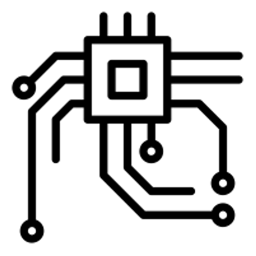
PLC Automation
All our solutions can execute logical/mathematical functions and automation sequences with super high speeds thanks to their PLC capabilities.
The integrated PLC is highly scalable and has been applied in all kinds of fields to solve a broad variety of challenges.
iConfPLC
User-friendly and graphical programming module (editor) for automation sequences and PLCs based on IEC 61131–3.
Full Independence for an Open Architecture
All of our products support several types of communication media, such as wireless (GPRS/ 3g, 4g), VSAT, analog radio, Ethernet or Serial, and can communicate with the entire iGrid T&D protocol suite. Thanks to our experiences with devices from almost all known vendors and our pledge for standard protocols, we can ensure the seamless integration of our products with any third party devices.
Related Projects
PV Plants Monitoring & Control Center
This project demonstrates some of the possibilities the Thytronic group package can provide. iControl is used to remotely control and supervise over 100 photovoltaic generation plants around Turkey. Each plant is owned by a different investor who can access his power plant’s information anytime via web browser. All data from solar meters and IEDs is collected and concentrated on-site by iRTUs, which pass the data to the iControl SCADA. The communication system could be set up particularly quickly and efficiently thanks to our long-term experience with protection relays by Thytronic.
Related Products
iControl SCADA
High-performance SCADA for the visualization and control of substation data. It is able to run either in client/server or standalone modes, providing advanced functionalities such as hot-standby redundancy, automatic line coloring, events notification (via e‑mail and sms), SQL logging, and reports generation.
iRTU – With I/Os for Direct Data Acquisition
Compact and scalable bay controller which can act as IEC 61850 client or server, featuring configurable I/O boards for direct data acquisition, high-precision timestamping and an optional Ethernet switch for additional Ethernet ports.
iGW-VM – unlimited control
The freely scalable iGW-VM supports all architectures using Windows or Linux, acting as a substation gateway, bay controller, RTU or communication front-end for SCADA systems. The iGW-VM is thus the perfect software choice for projects with a predetermined/preferred hardware or a large grid to cover (high number of datapoints).
iRTUe – Remote I/O Extensions
iGWs, iRTUs and third party master units can be freely extended by connecting one or several iRTUe.
They are IEC 61850 (GOOSE) compliant and come in many configurations such as 48 DI, 16 relays, 16 AI, 24 DI + 8 relays, 24 DI + 8 AI or 8 relays + 8 AI.
iGrid Solutions and Applications
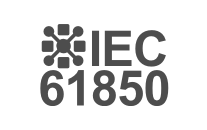
Automation with IEC 61850
The IEC 61850 standard is enabling new oportunities for vendor interoperability and advanced substation automation. Find out how you can take advantage of IEC 61850 with easy-to-use and adaptable solutions for a simple migration or retrofit.
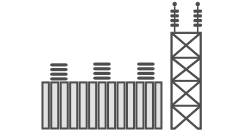
HV Substation Automation
Powerful substation automation systems often handle numerous communication protocols and media within one network, which can result in expensive and complex projects. Avoid these problems with interoperable technology and smart configuration tools.
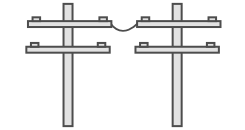
MV Distribution Grid Automation
It is often difficult to find the exact solution you need in a MV application, leading to higher costs than necessary. With our scalable and adaptable solutions you will be able to only pay for what you really need, without comprimising on quality or security.
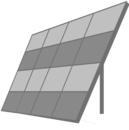
Photovoltaic Power Station
Using an open and scalable SCADA system to monitor and control a PV plant comes with many benefits on several levels. Find out how advanced communication technology affects PV operation, maintenance, system design, investment security, profits…
Do you need more information?
We are happy to assist you!
All personal data that you submit us via this form will be processed by Data Controller IGRID, S.L. and saved into CONTACTS processing activitie, with the purpose of answering your inquiry, via email or phone, and for a later follow up. Processing shall be lawful because you give us your consent for these specific purposes. Your personal data will not be disclosed to third parties unless forced by law. You have right to access to, rectify, or delete your personal data, and other rights as explained in our Privacy Policy






